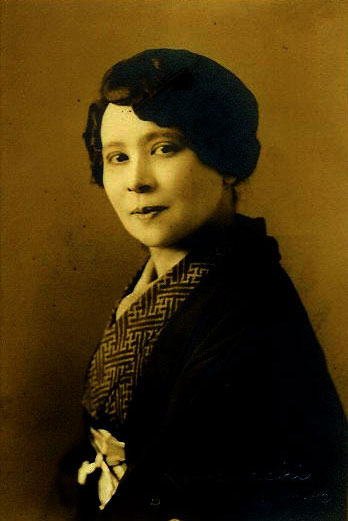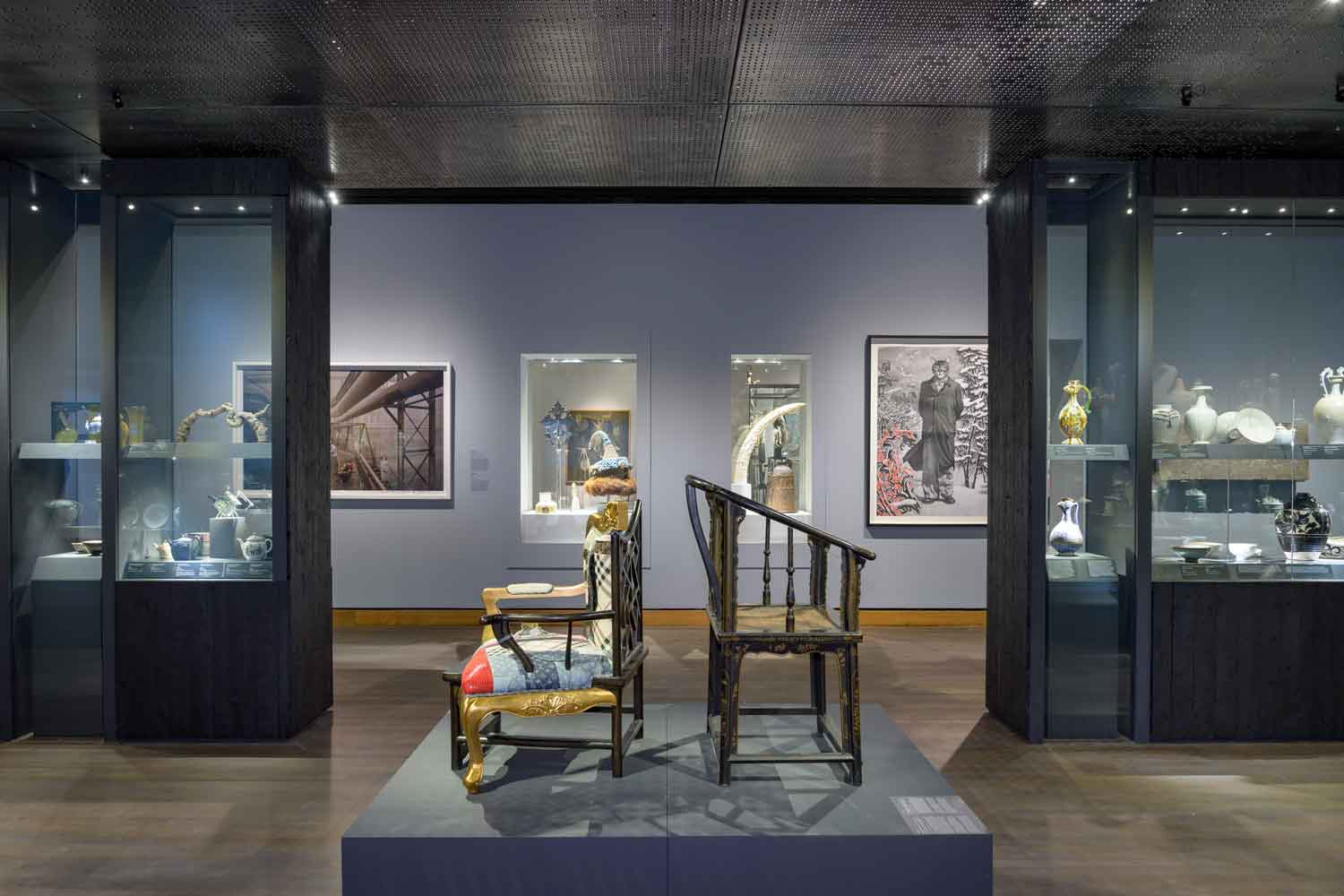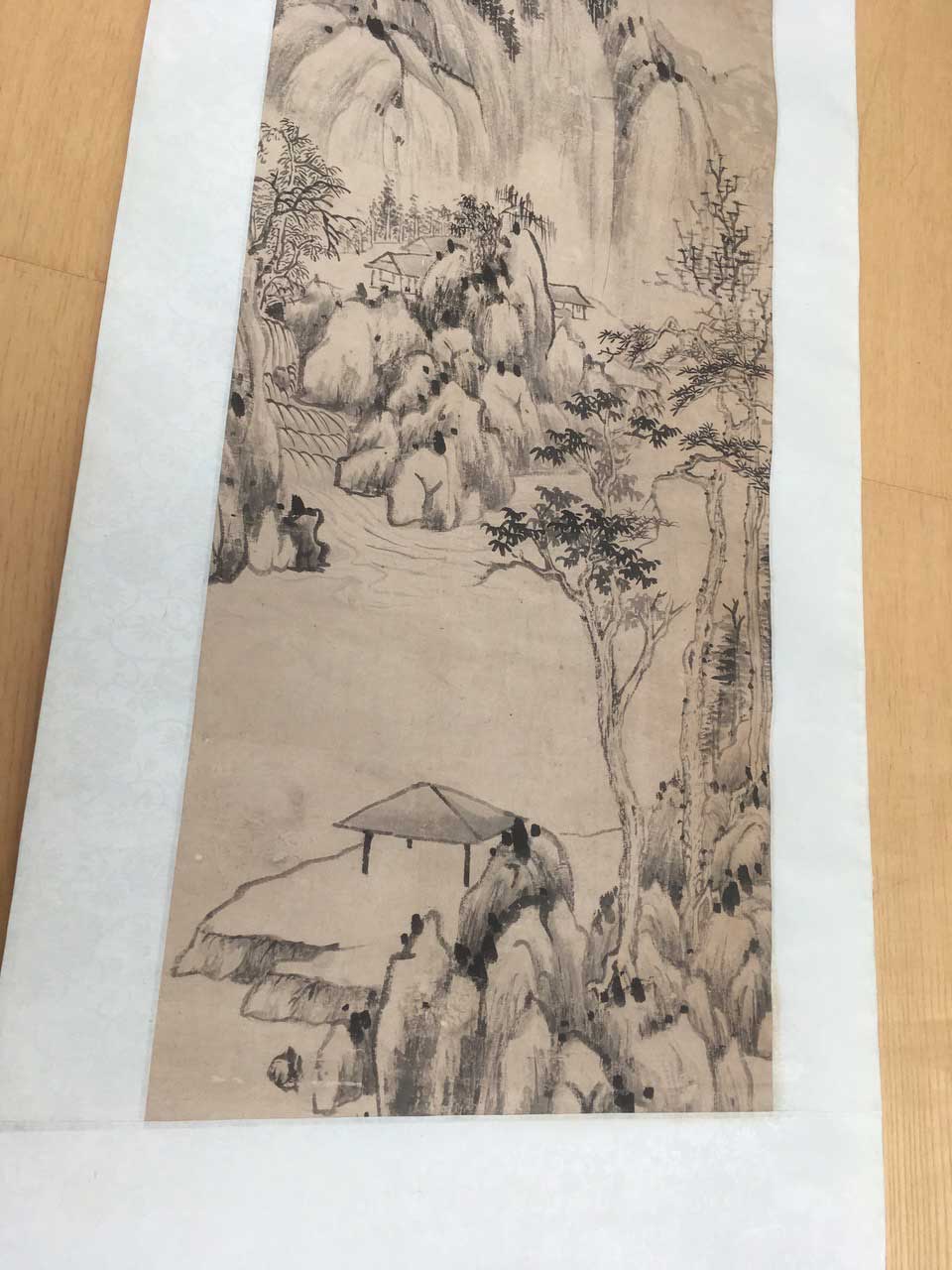H.5 Asian Collections in Canadian Museums and Galleries from the Nineteenth Century to Today
Sat Oct 23 / 11:30 – 13:00 PDT
voice_chat joinchairs /
- Sisi Li, University of Regina
- Karla McManus, University of Regina
Starting in the 19th century, Canadian museums and art galleries began collecting Asian art and artifacts. Early collections came from the donations of collectors (mostly merchants and scholars), while later sources were more diverse. By considering the history and evolution of these collections, including their collectors and acquisition histories, it is possible to analyze how Canadian Asian collections follow the evolution of ideas in art history, influenced by imperialism, colonialism and Orientalism. We invite papers on topics related to the history of collecting Asian art in Canada including: how has the interpretation of Asian collections in Canadian museums changed in order to demonstrate awareness of diverse communities? How can we understand the unique position of Asian art in Canada and the significance of Canadian Asian collections in the global context? How to study the broader issues of matter, agency, and identity between Canada and Asia through the Canadian Asian collection?
Sisi Li is a doctoral student of Art History in the Faculty of Media, Art, and Performance at the University of Regina. The focus of her research and publications is the material and cultural exchanges between Asia and the West, especially the Asian collections in the Canadian Museums. Her most recent paper, "The Western timepieces in China from the late Ming to the middle of the Qing Dynasty," is published in Cross-Cultural Communication (2021), and her most recent co-authored book is Visual Information Design (Peking University Press, 2017). She is now participating in a project (2020–23) to build an international curriculum supported by the Ministry of Education of China, and the course will target countries in need around the world.
Karla McManus is an Assistant Professor of Visual Art (Art History) in the Faculty of Media, Art, and Performance at the University of Regina. Her research focuses on how historic and contemporary environmental concerns are visualized photographically. In 2019, Karla curated the exhibition Inside/Outside: Images of the LAND in Artexte's Collection, which drew on her time as Researcher-in-Residence at Artexte Information Centre. Her recent publications include, "Narrating the Blind Field: Sites of Photographic and Ecological Knowledge in Rena Effendi's Liquid Land" in Les Cahiers de ARIP (October 2020), "The Future-Past, the Future-Present, the Future-Possible: The Chernobyl Exclusion Photographs of David McMillan," in Through Post-Atomic Eyes (McGill-Queen's University Press, 2020), and "Above, Below, and Behind the Camera: the Perspective of Animals" in From Ego to Eco: Mapping Shifts from Anthropocentrism to Ecocentrism (Brill Press, 2018). She is currently the Prairie Representative to the Board of the Universities Art Association of Canada.

Elizabeth Yeend Duer — Gyokusyo 玉蕉, c. 1920.
H.5.1 Collections within Collections: Japanese Art and UVic's Katharine Maltwood's Bequest
Cary Aileen Garcia Yero, Harvard University
The University of Victoria's Katharine and John Maltwood Collection includes Buddhist sculptures, paintings on silk, scrolls, kimonos, and an array of other objects from Japan. Katharine Maltwood is known to have studied Buddhism and travelled to Japan in 1926. Some of the work in the collection has clear provenance that links it to Katharine Maltwood and London art dealers from whom she acquired work.
The estate of Katharine Maltwood's Anglo-Japanese first cousin Elizabeth Yeend Duer-Gyokushō also makes up a significant portion of the Maltwood bequest, as Maltwood was the primary beneficiary of the artist cousin's estate. For example, Wildflowers Around Victoria Painted on Silk, a series of 50 watercolours painted by Duer after moving, in 1939, from Tokyo to Victoria, is one of the works within the Maltwood Collection with a more curious provenance. Did Maltwood commission this, or did Duer, herself, once own the Wildflowers series? Atomi Gyokushi, Duer's teacher, painted other paintings in the collection, suggesting Duer may have once owned them as well. The origins of screens, other ornaments, textiles, and objects with less clearly documented provenance in the Maltwood Collection may have also once belonged to Duer.
Excavating the provenance of Japanese objects in UVic's Maltwood Collection is a significant undertaking. It improves our knowledge about Maltwood and Duer and helps us to more clearly map the knowledge networks within which these two women artists moved. Moreover, more careful mapping of Maltwood's and Duer's connections to things Japanese help forward our understanding of the complex relations between English, Japanese, and Canadian ideas of Japanese art and collections of Japanese art in Canada.
Carolyn Butler Palmer is an Associate Professor of Art History and Visual Studies and Legacy Chair at the University of Victoria in British Columbia. She earned an MS in Folklore and Architectural Studies from the University of Utah and a PhD in the Histories of Art and Architecture from the University of Pittsburgh. She is an engaged art historian who practices and writes about engaged art history. In terms of content, she focuses on Indigenous and Settler relations to art in the Pacific Northwest region, theories and practices of curating, digital presentation of art historical work, and advocacy within the discipline of art history for engaged art history. Her program of research is community-based, public, and open. Carolyn authored "Big Art History: Art History as Social Knowledge" for the Journal of Canadian Art History, is currently contributing to new CAA Standards for the Practice of Art History that include public scholarship, curating, community-based research, and digital scholarship. At present, she is also working on a book manuscript tentatively titled Writings from the Edges of Art History, along with an array of other book and curatorial projects.

Re-orienting the Collection China, Permanent exhibition for the arts. The Montreal Museum of Fine Arts, 2019. Photo MMFA, Denis Farley.

Re-orienting the Collection China, Permanent exhibition for the arts. The Montreal Museum of Fine Arts, 2019. Photo MMFA, Denis Farley.
H.5.2 Re-Orienting the Collection: Asian Art at the Montreal Museum of Fine Arts
Laura Vigo, Montreal Museum of Fine Arts
Established in 1860 as an art association, the Montreal Museum of fine arts is one of the oldest "encyclopedic" museums in Canada. In its over 150 years of existence, it has morphed into five pavilions with a large, eclectic collection of more the 43,000 objects, including over 6000 Asian artifacts.
The incipient museum was meant to provide a window on a new, exotic world and foster a wider appreciation of foreign aesthetics, following the pedagogical example of the then-called South Kensington Museum in London. As most Asian Art acquisitions date back to the first half of the 20th century, the collection provides an unexpected, yet fascinating time capsule on collecting tendencies and aesthetic preferences in Montreal at the time, connected with the larger North American network of early collectors of "oriental" art.
Our holdings were construed around a Canadian-specific perception of Asia, filtered through the colonialist lenses of the all-encompassing British Empire. The core, mostly Chinese and Japanese three-dimensional objects, was assembled by a tightly knit group of English-speaking businessmen, who responded eagerly to the craze for Japanese and Chinese arts at the turn of the century. Even more fascinating, most of these early collectibles were sought out for their tactility: they could be easily handled and hold, allowing the holder to experience hands-on a distant and fantasized "orient."
As our new galleries illustrate, the history of collections and their provenance, focusing on the objects' biography, trans-location and constant permutation of meaning, can contribute to better contextualize (and question) a collection's creation and its current pertinence. Furthermore, the adoption of a more inclusive, less authoritative framework allows for multi-layered stories, inviting a plurality of voices. This paper addresses the challenges (and joys) in this evolution and the use of digital mediation to achieve it.
Laura Vigo is Curator of Asian Art and Archaeology at the Montreal Museum of Fine Arts (MMFA), where she has been involved in implementing the recently opened permanent galleries in the Arts of One World. She was also in charge of the adaptation of Obsession: Sir William Van Horne's Japanese Ceramics, an exhibition curated by Ron Graham and Akiko Takesue in November 2019 and co-curated the exhibition Connections: Our Artistic Diversity Dialogues with Our Collections in 2018. Vigo has a PhD in Chinese Archaeology from the School of Oriental and African Studies (SOAS), University of London (UK). She recently published articles in professional magazines including Arts of Asia, L'Objet d'Art, KunstTexte and more recently Spirale, in tandem to her work on various MMFA publications. She has been an Invited Professor in critical art history at Université de Montréal. Her current research interests include the history of collecting "the Other," specifically the reception and western-centric conceptualizations of certain ideas of Asian Art outside Asia.

Zou Zhilin 邹之麟, Landscape, c. 1640. Ink on paper. Photo by Victoria Nolte.
H.5.3 Eccentric Visions, Modern Worlds: Exhibiting Chinese Paintings at the National Gallery of Canada
Victoria Nolte, Carleton University
In an annual review written at the end of her first year as Director of the National Gallery of Canada (NGC), Hsio-yen Shih 時學顏 reflects upon the challenges of guiding an institution with a mandate to serve "a widely dispersed population in a country which has had, until very recently, relatively few art or museum resources." Over the course of her four-year tenure, Shih, a specialist on a range of subjects in Chinese art history, carried out a dynamic vision to widen and pluralize the scope of the NGC's collections and exhibition programming while also grappling with budgetary restrictions (Shih resigned as Director in 1981 in protest against federal budget cuts). This paper will examine two exhibitions of Chinese ink paintings organized by Shih within the first two years of her tenure: Chinese Painting (1978) and The Suma Collection of Twentieth-Century Chinese Painting (1979). Applying Shih's scholarship, I complicate epistemological constructions of Chinese art in Canada by positioning the works in these exhibitions as relational texts illustrating longer, co-constituted histories of modern art.
Organized concurrently with economic reforms and efforts to establish foreign relations with the People's Republic of China, the exhibitions are distinct for their focus on ink paintings acquired by significant Canadian and Japanese collectors (notably, the R.W. Finlayson and Suma collections) centring works by eighteenth and nineteenth-century individualist and eccentric painters (such as Luo Ping 羅聘, Hua Yan 華嵒, and Gao Fenghan 高凤翰) as well as Republican-era works by artists such as Qi Baishi 齊白石. This paper thinks critically about practices of exhibiting and collecting Chinese painting in the context of Canada's national institution, questioning the impetus to read these works in response to the NGC's focus on establishing and expanding national frameworks and cultural diplomacy.
Victoria Nolte is an art historian and doctoral candidate in the interdisciplinary Cultural Mediations program at Carleton University (Ottawa, ON). Her doctoral work focuses on the visual cultures of Asian diasporas in North America, examining issues of historical representation and practices of world-making in installation and media works by Asian Canadian artists. Broadly, her research focuses on two streams: on the collection, exhibition, and study of Chinese art in Canada and on how immigration impacts epistemologies and global histories of modern and contemporary art. She is currently Managing Editor of the journal Asian Diasporic Visual Cultures and the Americas (Brill) and a Contract Instructor in the School for Studies in Art and Culture at Carleton University, where she teaches an undergraduate survey of Asian art history.
H.5.4 A Forgotten Collection? Some Reflections on Hsio-yen Shih and the Heeramaneck Collection of South-Asian Art at the National Gallery of Canada
Diana Nemiroff, Carleton University
Prior to the 1970s, Asian art at the National Gallery was represented by a very small collection of traditional Chinese paintings acquired mainly through gifts, which had been on long-term loan to the ROM on the grounds that there was no in-house expertise or context for its display. This changed with the arrival of Hsio-yen Shih as director in 1977. A scholar of Asian art, Shih was only the second woman, and the first Chinese-born person, to direct the Gallery. One of her main aims as director was to make the collection more representative of Canada’s diverse population. A major opportunity to broaden the scope of the Gallery’s collection arrived when she learned that the widow of an important collector of South-Asian art, Nasli Heeramaneck, wished to sell what remained of his collection, parts of which had already been acquired by the Boston Museum of Fine Arts and the Los Angeles County Museum, among others. Shih had the collection brought to Ottawa to be assessed and found a donor to purchase and give it to the National Gallery. After Shih’s departure in 1981 to pursue an academic career, the collection was not seen again until the opening of the National Gallery’s new building in 1988. For the next fifteen years, a changing selection of works was on view in two galleries at the end of the sequence of European and American galleries. But with the retirement of the curator responsible for its display, the Heeramaneck collection was again consigned to storage and has not been seen since.
This paper considers the collection, the circumstances of its acquisition, and its subsequent disappearance from view, and argues that it comprises a significant resource that deserves to be better known today, given the emphasis on diversity in Canadian museums, including the National Gallery.
Diana Nemiroff began her career as an art critic and Quebec regional editor for the Vancouver art magazine Vanguard. She is a former curator of contemporary and modern art at the National Gallery of Canada (1984–2005) and was the director of the Carleton University Art Gallery from 2005 to 2012. Over the course of her career, she organized over forty exhibitions of Canadian and international artists and has written extensively on contemporary and modern art. Adjunct professor at the University of Ottawa and Carleton University, Diana Nemiroff is a fellow of the Royal Society of Canada and was a 2012 laureate of the Governor General’s award for her exceptional contribution to the visual and media arts. Her book, Women at the Helm: How Jean Sutherland Boggs, Hsio-yen Shih, and Shirley L. Thomson Changed the National Gallery of Canada is forthcoming from McGill-Queen's University Press in fall 2021.